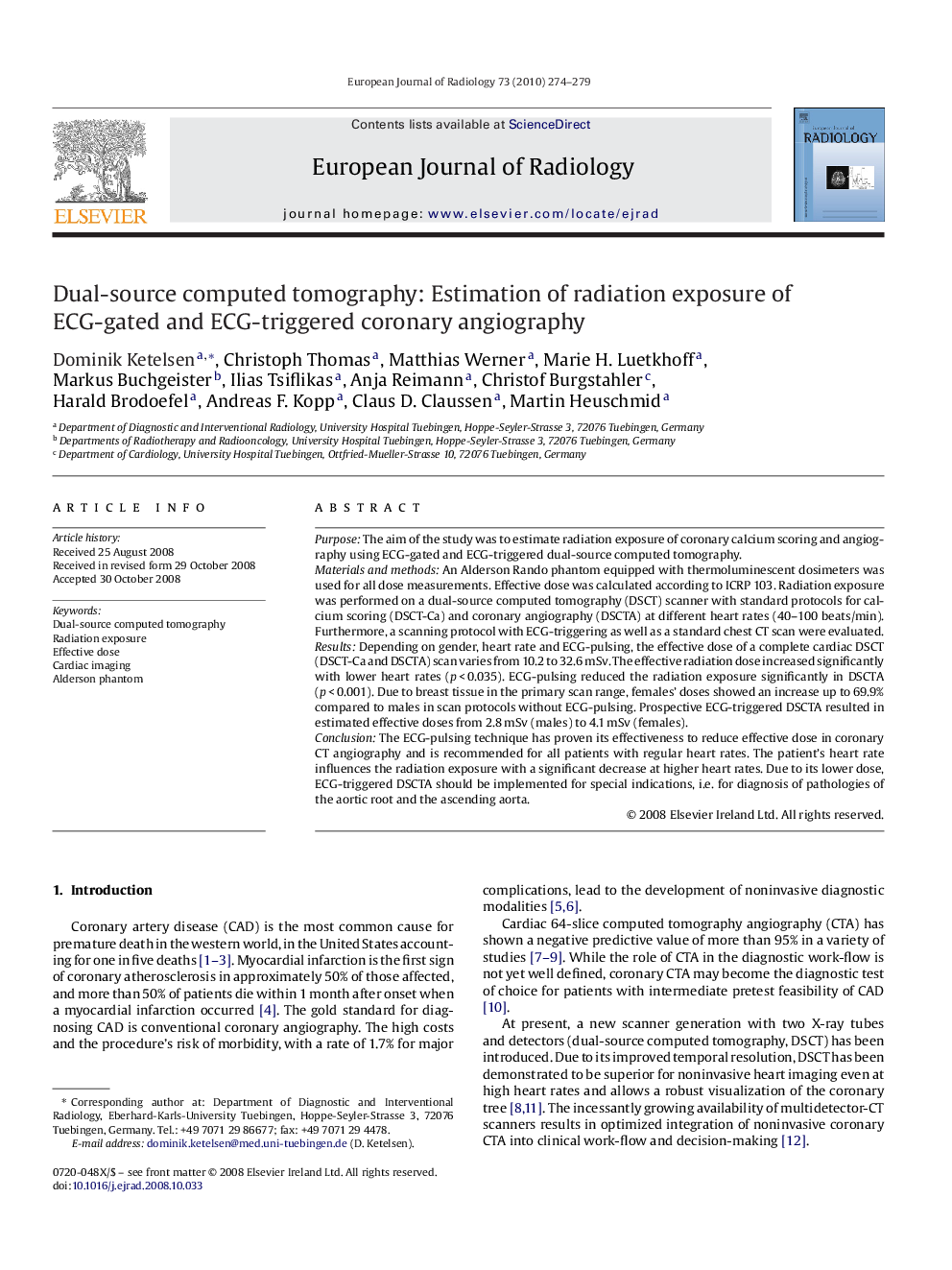| Article ID | Journal | Published Year | Pages | File Type |
|---|---|---|---|---|
| 4226541 | European Journal of Radiology | 2010 | 6 Pages |
PurposeThe aim of the study was to estimate radiation exposure of coronary calcium scoring and angiography using ECG-gated and ECG-triggered dual-source computed tomography.Materials and methodsAn Alderson Rando phantom equipped with thermoluminescent dosimeters was used for all dose measurements. Effective dose was calculated according to ICRP 103. Radiation exposure was performed on a dual-source computed tomography (DSCT) scanner with standard protocols for calcium scoring (DSCT-Ca) and coronary angiography (DSCTA) at different heart rates (40–100 beats/min). Furthermore, a scanning protocol with ECG-triggering as well as a standard chest CT scan were evaluated.ResultsDepending on gender, heart rate and ECG-pulsing, the effective dose of a complete cardiac DSCT (DSCT-Ca and DSCTA) scan varies from 10.2 to 32.6 mSv. The effective radiation dose increased significantly with lower heart rates (p < 0.035). ECG-pulsing reduced the radiation exposure significantly in DSCTA (p < 0.001). Due to breast tissue in the primary scan range, females’ doses showed an increase up to 69.9% compared to males in scan protocols without ECG-pulsing. Prospective ECG-triggered DSCTA resulted in estimated effective doses from 2.8 mSv (males) to 4.1 mSv (females).ConclusionThe ECG-pulsing technique has proven its effectiveness to reduce effective dose in coronary CT angiography and is recommended for all patients with regular heart rates. The patient's heart rate influences the radiation exposure with a significant decrease at higher heart rates. Due to its lower dose, ECG-triggered DSCTA should be implemented for special indications, i.e. for diagnosis of pathologies of the aortic root and the ascending aorta.
